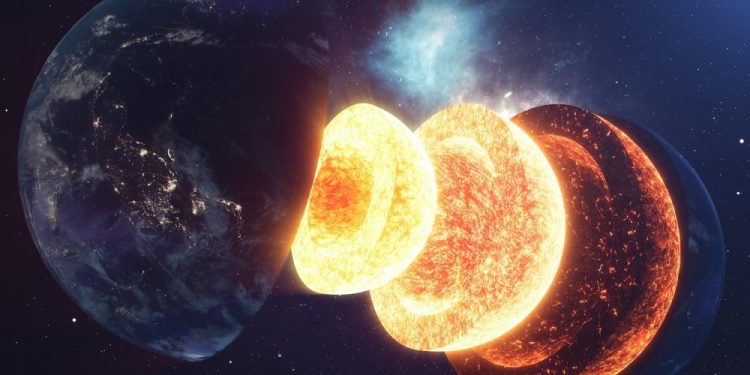Seismologists at the University of California at Berkeley have found that strange changes have begun to occur with the Earth’s inner core. One side of the core is growing faster than the other, and the reasons for this are yet unclear. The discovery helped scientists prove the age of the inner core and will be used to learn more about Earth’s magnetic field, which existed long before the innermost part of our planet formed.
Everything you should know about the uneven growth of Earth’s inner core
1. Our Earth’s inner core was not always solid. For billions of years, it consisted of molten material which at some point began to freeze and solidify. According to scientists, this process took about half a billion years.
2. And since the very beginning when it started to freeze out, the Earth’s inner core has been growing unevenly, with one side outgrowing the other.
3. A new model indicates that the asymmetric growth is about a millimeter per year on average. The model was based on geodynamic growth and the physical properties of iron at high pressure and temperature.
4. Scientists suggest that something has appeared in this region under the Earth’s mantle or in the outer core that removes heat more than on the opposite side. This accelerates the crystallization of molten iron.
5. Wouldn’t this, at some point, change the shape of the core and our planet respectively? No, because gravity spreads the crystals evenly throughout the core and helps keep the spherical shape.

6. Yet, this anomaly can have a serious impact on the Earth’s magnetic field. The release of heat from the inner core sets the system for generating it in motion.
7. Ultimately, changes in the magnetic field can weaken the protection against dangerous solar particles.
8. Scientists note that based on the new models, Earth’s inner core has existed for about 0.5-1.5 billion years.
9. Although the core in its current state formed fairly recently, Earth’s magnetic field has existed for about 3 billion years. Studying the shape changes will help figure out how the magnetic field might have functioned before the planet’s solid inner core emerged as it certainly did not generate in the same way.
10. According to some scientists, our planet’s magnetic field before it had a solid core was much weaker. Perhaps it was originally created by lighter elements that were dissolving and did not grow strong before the molten material in the core began to crystallize.
Join the discussion and participate in awesome giveaways in our mobile Telegram group. Join Curiosmos on Telegram Today. t.me/Curiosmos
Sources:
• Cassella, C. (n.d.). Earth’s Crystallized Iron Inner Core Could Be Lopsided, Study Suggests. ScienceAlert.
• Frost, D. A., Lasbleis, M., Chandler, B., & Romanowicz, B. (2021, June 3). Dynamic history of the inner core constrained by seismic anisotropy. Nature News.
• Morrison, R. (2021, June 4). Earth’s solid-iron inner core has been growing faster on one side than the other. Daily Mail Online.
• Sanders, R. (2021, June 3). Is Earth’s core lopsided? Strange goings-on in our planet’s interior. Berkeley News.











